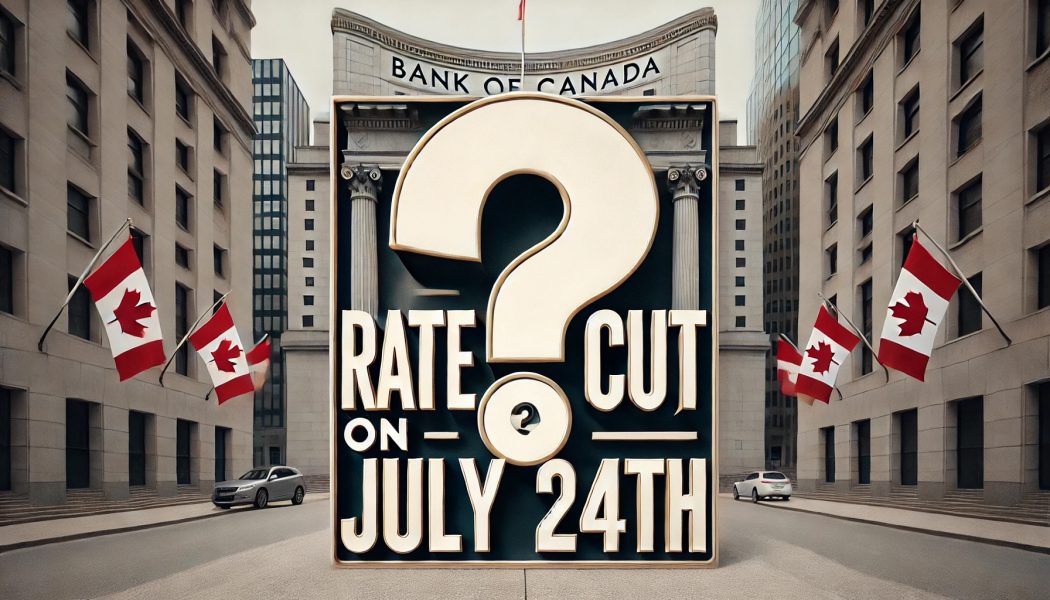The Bank of Canada rate cut on June 5th was the first in more than four years. With four straight months of declining inflation, the Bank of Canada had the confidence to move forward with the chop.
As there was still some uncertainty as to whether we would see the cut in June, bond yields reacted positively by dropping sharply, leading to most lenders cutting their fixed mortgage rates by 0.10% to 0.15%, depending on the lender.
This was positive news which appeared to pave the way for another possible rate cut in July.
However, another rate cut in July may be wishful thinking.
Inflation Report Higher Than Expected
The inflation report released by StatsCan on June 25th was disappointing to say the least. Economists were expecting year over year inflation to drop by another 0.10% to 2.6%. Instead, we saw an unwelcome surprise at 2.9%; 0.3% above expectations. This may throw a wrench in the Bank of Canada’s gears when it comes to another potential cut on July 24th.
How Will This Affect Fixed Mortgage Rates?
The result was a large spike in bond yields which is the key driver of fixed mortgage rate pricing. The yields were up over 2% on Tuesday, June 25th and up by an additional 3%+ the following day (at time of writing).
This doesn’t mean we should be hitting the panic button. After all, it’s just a single report. We saw four straight months of falling inflation and we were due for one to come in higher. As I’ve mentioned in previous blogs, it’s never a straight downward path and it’s typical to see some bumps along the way.
The large spike in yields definitely has the attention of mortgage lenders, although it’s likely not enough for lenders to move their fixed mortgage rates upward. However, it is enough to put a halt to their downward trend. If the bond yields continue to climb, then lenders will have no choice but to increase their fixed rates.
Preferential Mortgage Rate Pricing
There are some lenders who offer us preferential pricing on mortgage rates, which is where they will assign a special rate that is lower than what they would typically offer based on their margins on that day. With a large spike in yields, their margins are reduced, which would mean that they may not be quite as aggressive on their rate offerings as they were prior to the spike. It’s possible that we could start to see some marginally higher rates from these lenders.
A Market Overreaction?
Anytime we see disappointing economic news, bond yields can react with an upward spike. There are times when the jump can be justified, however, the market has been known to overreact at times. It’s possible that this is just a temporary blip that may soon settle back down. Just to be clear, this is a ‘possibility’ and I’m not suggesting that this is what’s happening. It’s far too soon to tell. But we’ll find out soon enough.
Regardless of whether bond yields continue to climb, eventually, they will settle back down. This could happen within a few days, a few weeks or even longer. All we can do is wait and watch.
As of now, the lowest 5-year fixed rate for an insured mortgage can be found as low as 4.44%, which is the lowest it has been in almost two years.
Conclusion
The next inflation report will be released by Statistics Canada on July 16th, which is eight days before the next Bank of Canada announcement. If we see another uptick in inflation, or if it remains elevated, then it’s likely the BoC will leave their rate as it is.
But this doesn’t mean that we should be concerned.
As much as we would like to see the rate dropping with each announcement, that expectation may be a bit far-fetched. If we don’t see a cut in July, then it’s likely we’ll see one with the following announcement on September 4th. But as always, nothing is guaranteed in the financial world and anything can happen.








Nope.
Rates won’t be rising.
Could’ve just asked me…
Thanks for the comment. The Bank of Canada rate will not be rising. However, fixed rates are priced based on bond yields as I continually mention in my blogs. They have a mind of their own and will move independently of the Bank of Canada rate. We’ve already seen some increases to the special pricing offered by some lenders. But most lenders with set fixed mortgage rates have not increased. However, if the bond yields were to continue to rise, then they would have no choice but to increase, as mentioned. Fixed rates can even move in the opposite direction of the Bank of Canada rate at times. As long as bond yields stay at their current level, then it’s not likely we’ll see any official movement to fixed rates. But this is never guaranteed and anything can happen.